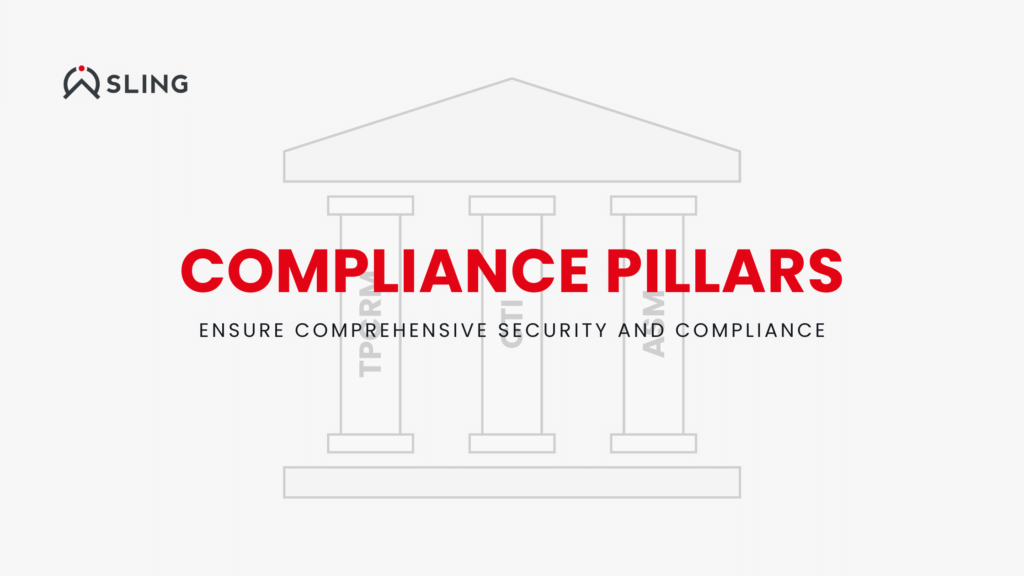Managing third-party cyber risks and compliance standards (such as DORA, NIS2, ISO 27001, NIST, HIPAA, and SEC) is essential, particularly when involving third-party partners. Given the growing dependence on external vendors, it’s crucial to verify that these partners adhere to cybersecurity standards to minimize risks and uphold regulatory requirements. In each third-party cybersecurity related framework, it’s essential to address several key areas to ensure comprehensive security and compliance.
Third-Party Cyber Risk Management:
Businesses should monitor third-party cyber risks by conducting thorough risk analyses. This involves not only evaluating the cybersecurity posture of each third-party before entering into a partnership but also continuously monitoring their practices throughout. Regular risk assessments should be conducted to identify any weaknesses or gaps in security, with particular attention to how third parties handle sensitive data, manage access controls, and respond to potential threats.
With the help of Cyber Risk Ratings (CRR), businesses can assess a third party’s risk level through a standardized rating system. These ratings focus on the likelihood of risk scenarios. The risk analyses should align with established compliance standards such as DORA, NIS2, ISO 27001, NIST, HIPAA, SEC and others that are relevant to the business’s industry. By guaranteeing that all third parties meet these requirements, businesses can significantly reduce the likelihood of data breaches, financial loss, or reputational damage stemming from third-party vulnerabilities.
Visibility into Cyber Threat Intelligence (CTI):
To stay ahead of potential threats, businesses must prioritize enhancing their visibility into cyber threat intelligence (CTI). This involves leveraging advanced threat detection and analysis tools that provide deep insights into the shifting environment. By integrating these capabilities, businesses can monitor and analyze data from a wide range of sources, identifying patterns that could signal an attack.
This gives organizations the ability to discover hidden vulnerabilities within their systems, networks, and processes that might otherwise go unnoticed. By identifying these weaknesses earlier on, businesses can implement targeted defenses and remediation strategies before threats materialize. Additionally, enhanced CTI allows for real-time threat monitoring, enabling rapid responses to emerging threats and minimizing the potential impact on operations. As these capabilities are integrated, it’s essential to ensure that all data collection and monitoring practices comply with relevant regulations and standards, maintaining both security and compliance.
Attack Surface Management (ASM):
Businesses should routinely conduct comprehensive assessments of their attack surfaces, viewing them through the lens of potential attackers. This non-intrusive method allows organizations to map out all possible entry points and weaknesses without disrupting operations. By identifying and addressing these vulnerabilities early, businesses can significantly reduce the risk of exploitation. This approach enhances the organization’s ability to respond to up-and-coming threats. Regularly updating and adapting this process ensures that businesses stay ahead of cyber threats, maintaining strong cyber postures at all times. Additionally, ensuring that identified vulnerabilities and corresponding mitigations are documented and reviewed during compliance assessments is critical to maintaining regulatory adherence and reducing legal risks.
How Compliance Works with Sling:
Sling enables companies to automatically assess their own compliance and that of their vendors using customizable questionnaires. The results indicate how well each party aligns with the relevant criteria. The platform can be tailored to match a company’s specific framework requirements, or Sling’s own standardized questionnaire can be used. The data is then automatically exported into reports that detail compliance status and risk severity.
Sling’s compliance framework is aligned with key standards from the United States and the European Union, including DORA, NIS2, ISO 27001, NIST, HIPAA, and the SEC. By adhering to these standards, businesses can strengthen their security, maintain regulatory compliance, and achieve operational excellence, ultimately protecting their assets and reputation. As a key partner, Sling confidently assists businesses in navigating cyber risks and maintaining compliance



